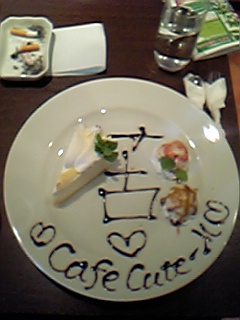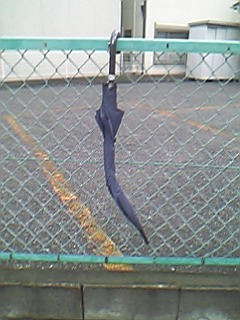I've been reading a book called Tama no mihashira (『霊の真柱』) written by HIRATA Atsutane (平田篤胤, 1776-1843). Plenty of interesting intellectual background is available online, but to give you the summary, it's an attempt at a complete cosmology, right down to settling the issue of where souls go when people die (霊の行方の安定), based entirely on close reading of ancient Japanese texts and certain trusted commentaries on them.
The reliance on Japanese sources only is key, and Atsutane can't go more than a few pages without harping on it. He has particular scorn for China and their habit of deducing things using logic and arguments, which he throws into the basket of kotowari (理).
He uses the same kind of logical tools, of course, but applies them more to analysis of ancient writings than extrapolation upon them. Still, there is obviously a hypocritical overlap.
On the other hand, he does seem to have a soft spot for empirical science -- at least where it supports his arguments.
近代になりて、遥かに西なる国々の人どもは、海路を…廻りありくによりて、この大地のありかたを、よく見究て、地は丸にして、虚空に浮かべることなど考へ得たるに、彼の漢国の旧き説どもは、皆いたく違へることの多きを以て、すべて理を以て、おしあてに定むることの、信けがたきを知るべし。
In recent times, the peoples of distant western countries have ... from their roaming of the sea, made careful observations of the world and come to the conclusion that it is round and floats in space. This tells us that the old Chinese theories, which all differ in many respects and are based on kotowari and guesswork, are not to be trusted.
Anyway, Atsutane begins by retelling, with liberal quotation and careful exegesis, the standard Kojiki creation story. It starts with the birth of Everything, an undifferentiated glob, where several kami are born and "conceal their persons". Kami tend to create other kami in the Kojiki, which obviously raises the bootstrapping question. To his credit, Atsutane addresses it, but unfortunately his reply (quoting Motoori Norinaga, who he refers to as 師 (Teacher, Master)) is deeply unsatisfying.
問いけらく、「世のあらゆる万の事は、その本みな、産霊神の神霊に生出るといはば、その産霊神は、また何神の御霊によりて生り坐せることぞ」。師の曰く、「この神等は、何れの御霊によりて生り坐せるといふことは、伝なければ知りがたし…」
It is asked, "If, as you say, the myriad things of this world were all born of Musubi no Kami, from what spirit were the Musubi no Kami themselves born?" Master [Norinaga] said, "There is no record of which spirit these kami were born from, and so we cannot know..."
... and I will spare you the protracted attack on independent thought which follows.
Anyway, kami are born etc. etc. (云々) and eventually, all the light stuff collects at the top of the jellyfish-like proto-universe and floats up to become Ame, roughly equivalent to heaven, while all the bad, heavy stuff sinks to the bottom and gloops out to become Yomi, the underworld. So at this point you have three globes, still linked in a chain. Our world is the one in the middle, not as good or light as Ame, but not as bad or dark as Yomi -- just what was left over. ("天は萌え上り、泉は垂れ下りて、跡に残れる物の、初て土の象を成し[た]".)
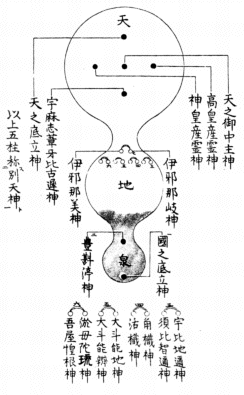
Atsutane notes that "The only correct characters for 'Yomi' are '夜見' ["night-view"]. '泉' ["fountain"] is particularly meaningless. However, since everyone is used to it, I shall write it thus. Do not be misled." Writing the word for 'underworld' with the characters 黄泉 is a direct borrowing from Chinese mythology, and so obviously Atsutane is against it.
A few kami later, including creators of Japan Izanagi no Mikoto and Izanami no Mikoto, and the universe looks like the diagram I have included there to the right.
Now, in Atsutane's explanation, Ame is destined to become the sun, while Yomi becomes the moon. Yes, literally. But neither the moon nor the sun was connected to the earth in the early 1800s, so at some point the links -- which you can see in the diagram, and which are necessary to allow the kami to go from world to world as the Kojiki details -- must have been broken. Atsutane obviously can't give an exact date for when the cord was cut, but he has given it some serious thought:
この、天神諸の命もちて、二柱の神に、この国土を固め成せと詔命賜へる時は、天と地とは既に断れ離れたるほどのことなり。其は、何を以て知るぞなれば、天神の此の御言に依りて知らるるなり。然るは、天神もろもろ、高く天上に坐しまして見下し賜へば、この国土の漂在へるが、よく見え坐しし趣の御言なること、此と指し詔たまへるにて著明なり。もし此時もなほ、天と地と断れ離れざらましかば、その根と在る国土の漂蕩ひたらむには、天も共に漂ふべき理なるを、いかでこの国土をさして、此漂在国とは詔ふべき。
When the multitudinous kami of Ame told the two kami [Izanami no Mikoto and Izanagi no Mikoto] to cause this land to coalesce and form, Ame and Earth were already separated. How do we know this? We know it from the words of the kami here. When it is said that the multitudinous kami of Ame were high in the heavens looking down and saw this land floating, and referred to it thus, it becomes clear to us at this point. If at this time Ame and Earth were not yet separated, then when this land, the root, floated, Ame should logically have floated with it; why then would they have pointed to this land and said "this floating land"?
I confess that I had to give it up for Atsutane's kotowari fu at this point, although clearly he has only proved that there was no rigid connection; an elastic connection could still have been in place. But no matter.
He continues in this vein through the entire "Age of the Gods" part of the Kojiki and Nihonshoki, addressing such issues as how Izanami no Mikoto could possibly have given birth to entire continents (they grew after they were born, just like animals and plants do! Duh!); the process by which the true and uncorrupted Japanese records evolved into the bizarre but still recognizable Western version in which the creator couple's names are Adamu (安太牟) and Eha (延波); and what exactly Izanami no Mikoto and Izanagi no Mikoto were stirring in the beginning to make Japan -- the Kojiki says it was brine, but they hadn't made water yet. ("或人問ふ、「…其潮は水に非ずして何ぞ」" -- "Some people ask, '... If this brine was not water, then what was it?'" Add 'the hell' to taste, I presume. The answer, by the way, is: "Brine is not the same as regular water; there is no inconsistency.")
A great deal of rules lawyering and commentary juggling later -- the Manyoshu, amusingly, mostly ends up by the wayside, and Atsutane has particularly harsh words for poets who mistakenly envisage the sun as a thing that goes through Ame, rather than actually being Ame -- we end up with the universe as we know it. Japan is, of course, on top of the world (there is a complicated analogy involving heads and faces to explain why the sun nevertheless passes slightly to the south), and the unfortunate peoples of other countries, being further from Ame, are ignorant, wicked, and not very good-looking.
The scene is thus set for Atsutane to explore his main topic: where souls go when bodies die. Stay tuned for this tomorrow. Or not, if you already read it via that link at the top. But I also have a scathing tanka about Buddha for you.
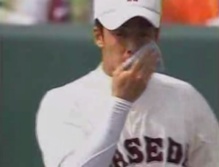
![[No-sword]](http://no-sword.jp/images/site/no-sword_banner.jpg)

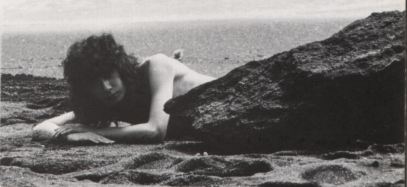
 (From
(From 

